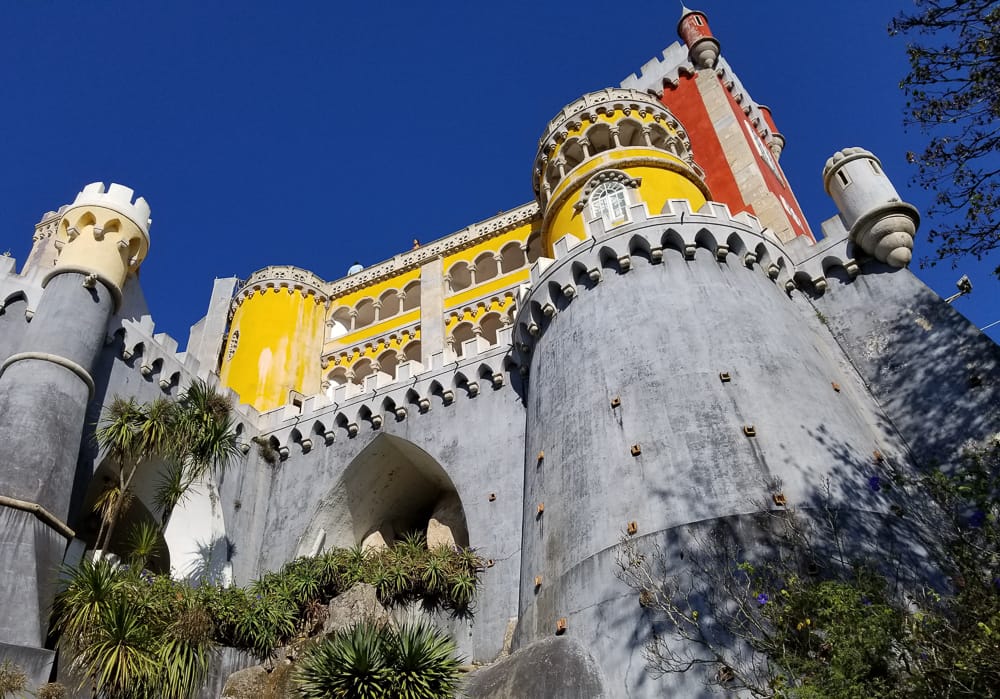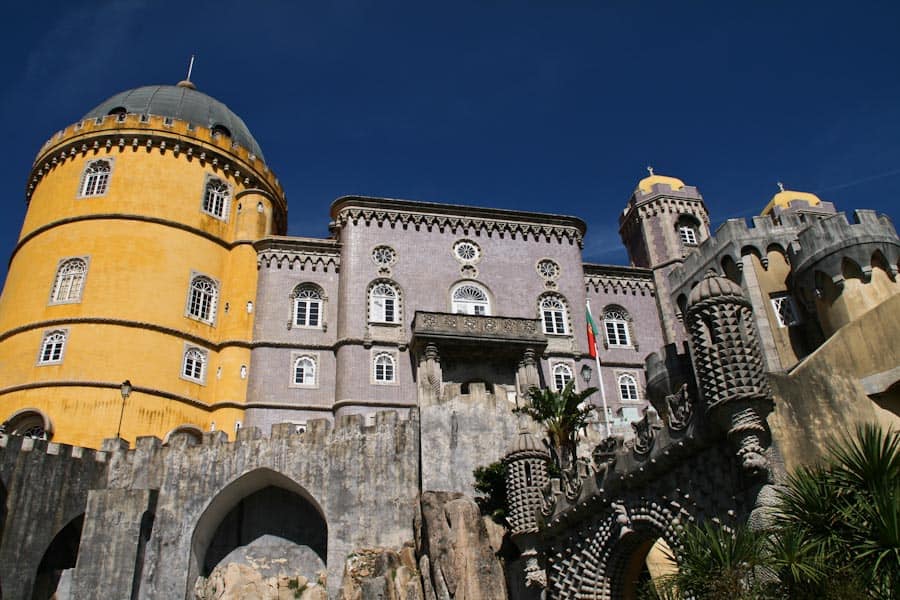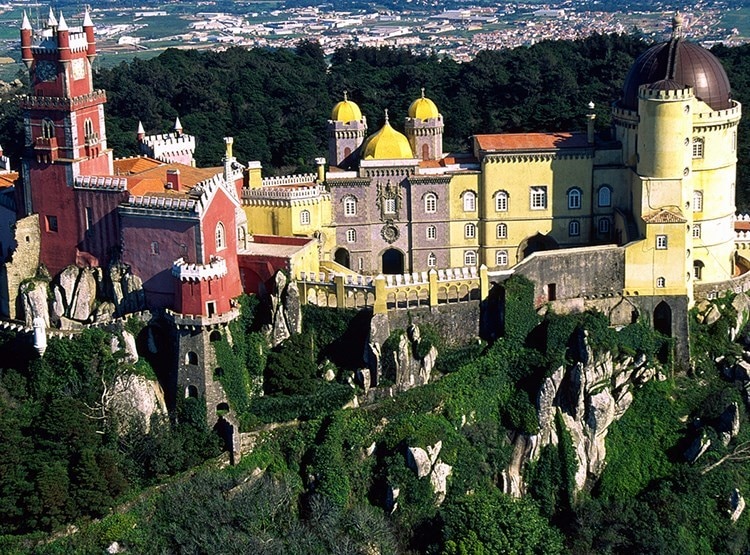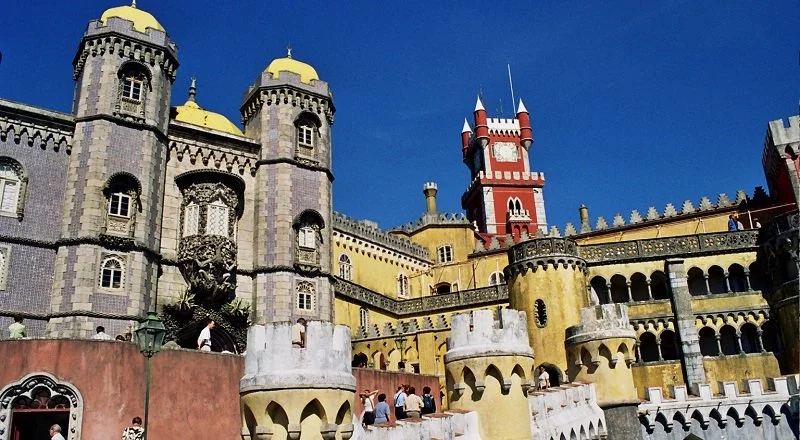Sintra is a charming town in the Greater Lisbon region of Portugal, nestled on the Portuguese Riviera. Home to about 385,654 people as of 2021 and covering an area of 319.23 square kilometers, Sintra is one of Portugal’s most urbanized and densely populated municipalities. Known for its breathtaking scenery, it is a major tourist destination boasting historic palaces, castles, scenic beaches, parks, and gardens.

The Sintra-Cascais Nature Park, featuring the Sintra Mountains, adds to the town’s natural beauty. The historic center of Vila de Sintra is renowned for its 19th-century Romanticist architecture, historic estates and villas, and royal palaces and castles, earning it a UNESCO World Heritage Site designation. Notable landmarks include the medieval Castle of the Moors, the romantic Pena National Palace, and the Sintra National Palace from the Portuguese Renaissance period.
:format(jpg)/f.elconfidencial.com%2Foriginal%2Ff08%2F208%2F0d3%2Ff082080d39fdac0fe4c5cf4f9fca53df.jpg)
Sintra is among the wealthiest municipalities in Portugal and the Iberian Peninsula, and it has a significant foreign expatriate community along the Portuguese Riviera. It is frequently rated as one of the best places to live in Portugal. Additionally, Sintra hosts the ECB Forum on Central Banking, an annual event organized by the European Central Bank.
The earliest signs of human habitation in Sintra were found in Penha Verde, with evidence dating back to the early Paleolithic period. Similar finds were uncovered at an open-air site in São Pedro de Canaferrim, near the chapel of the Moorish Castle, including decorated ceramics and flint tools from the 5th millennium BC, indicating a Neolithic presence.

Ceramic fragments, including many late Chalcolithic vases from the Sintra mountains, suggest that between the fourth and third millennia BC, the area near present-day Sintra was home to a Neolithic/Chalcolithic community. This settlement shared characteristics with fortified communities in Lisbon and Setúbal. Evidence from sites like Quinta das Sequoias and São Pedro de Canaferrim contrasts with findings from the walled town of Penha Verde and the Bella Vista funerary monument. Bronze Age artifacts have also been discovered in the Sintra Mountains, including near the town and in the Monte do Sereno area, as well as a late Bronze Age settlement within the Moorish Castle dating to the 9th–6th centuries BC.

One of the most notable artifacts from this period is the Sintra Collar, a middle Bronze Age gold neck-ring discovered near the city in the late 19th century, now housed in the British Museum since 1900. Additionally, in Santa Eufémia da Serra, an Iron Age settlement yielded artifacts from indigenous tribes and Mediterranean peoples, especially from the Punic period, dating to the early 4th century BC, before Romanization in the mid-2nd century BC.

The name Sintra comes from the medieval “Suntria,” likely linked to ancient Indo-European cultures, meaning ‘bright star’ or ‘sun.’ Historical figures like Marcus Terentius Varro and Lucius Junius Moderatus Columella called it “the sacred mountain,” and Ptolemy referred to it as the “mountains of the moon.” The area’s proximity to the commercial center of Olisipo, founded by the Turduli Oppidani in the first half of the first millennium BC, meant it was continuously influenced by various cultures, leaving a rich tapestry of historical remnants.

In July 1109, Count Henry successfully reconquered the Castle of Sintra. The previous year, Prince Sigurd the Crusader of Norway attempted to capture the castle from the Moors during his journey to the Holy Land. Despite landing at the Colares River, Sigurd’s forces failed to seize the castle. The castle eventually surrendered to Christian forces in November 1147, following the conquest of Lisbon by Afonso Henriques, with the support of Crusaders. Afterward, the castle, along with Almada and Palmela, was integrated into Christian territories. Afonso Henriques commemorated his victory by establishing the Church of São Pedro de Canaferrim within the Moorish Castle.
On January 9, 1154, Afonso Henriques granted a charter to the town of Sintra, establishing its municipality and regalia. This charter outlined the territory of Sintra, which included four major parishes: São Pedro de Canaferrim, São Martinho, Santa Maria, and São Miguel. Sintra town became the center of a notable Sephardic community, which had a synagogue and a dedicated quarter. Jewish communities also existed in nearby areas like Colares but faced pressure from incoming Christian serfs.

Throughout the 12th and 13th centuries, the fertile lands of Sintra attracted various convents, monasteries, and military orders that established residences, estates, water-mills, and vineyards. Historical records from this period detail numerous donations and grants. For example, between 1157 and 1158, Afonso Henriques granted various properties in Sintra to Gualdim Pais, the master of the Knights Templar.

By 1210, the Monastery of Santa Cruz in Coimbra owned houses in Pocilgais, and by 1230, it controlled properties in Almargem. The Monastery of São Vicente de Fora in Lisbon held a vineyard in Colares in 1216 and estates in Queluz and Barota by 1218. The Monastery of Santa Maria de Alcobaça and the Order of Santiago also held significant properties in the region.

Many of Afonso Henriques’ donations were reaffirmed by his son, Sancho I, in 1189 as part of a broader strategy during the post-Reconquista period. By 1261, Sintra had a local administration with an alcalde representing the Crown and two locally elected judges. During King Sancho II’s reign, the churches of São Pedro and São Martinho were ceded to the Bishop of Lisbon amid political conflicts. However, the Crown’s patrimony was defined early on; in 1287, King Denis donated Sintra to Queen Elizabeth of Portugal. The town remained with her until it was transferred to Infante Afonso (later King Afonso IV) and then reverted to the Queen’s ownership in 1334.

